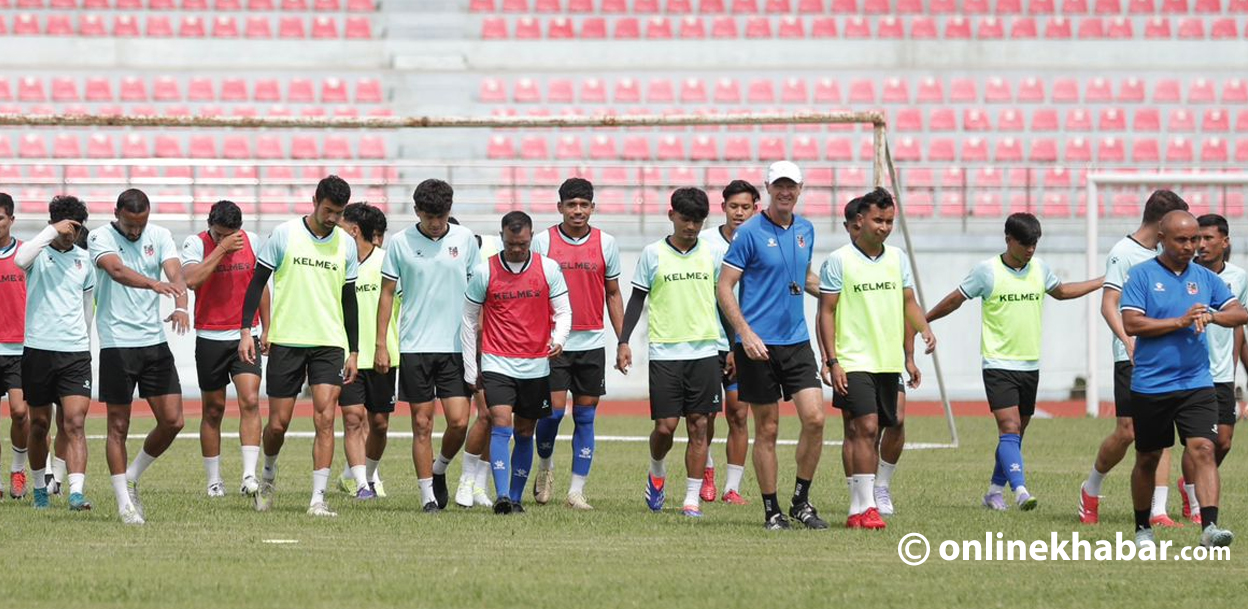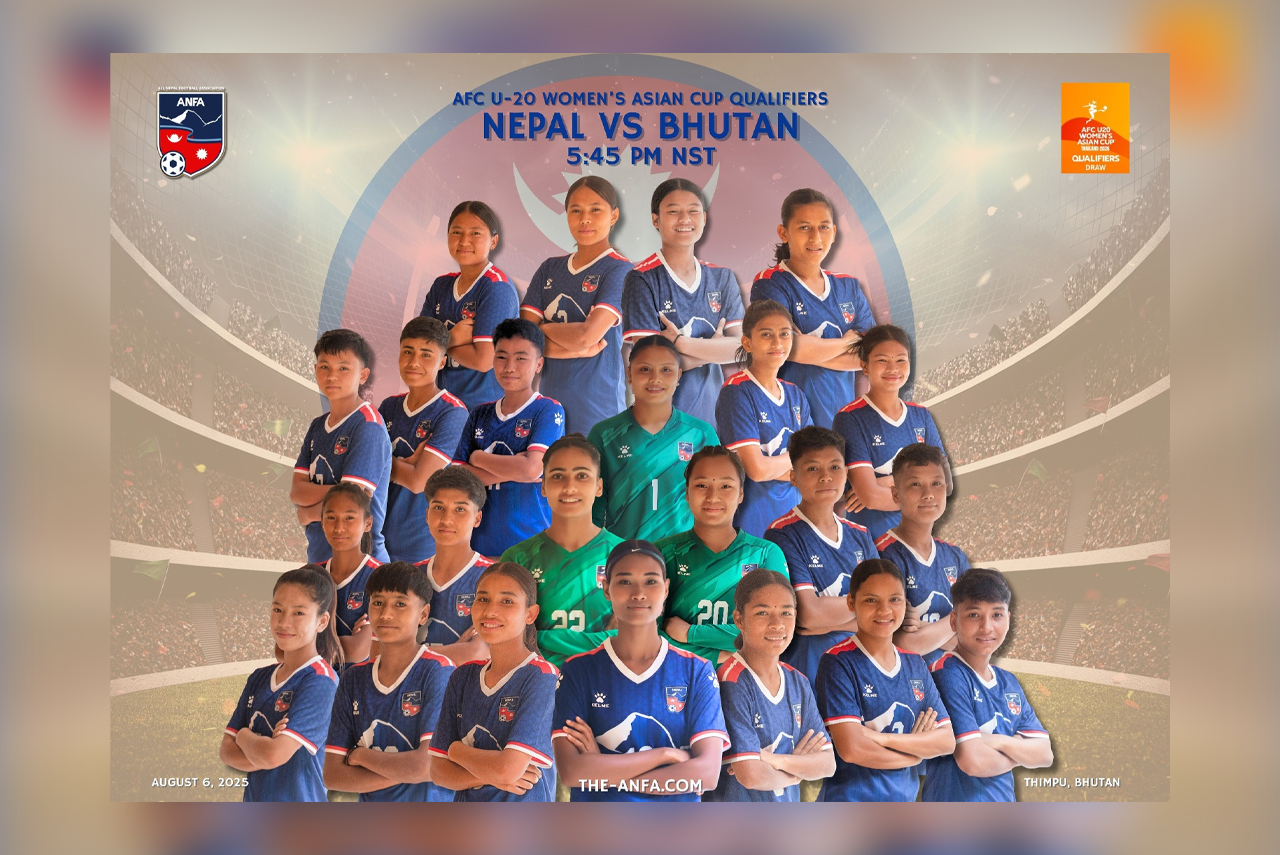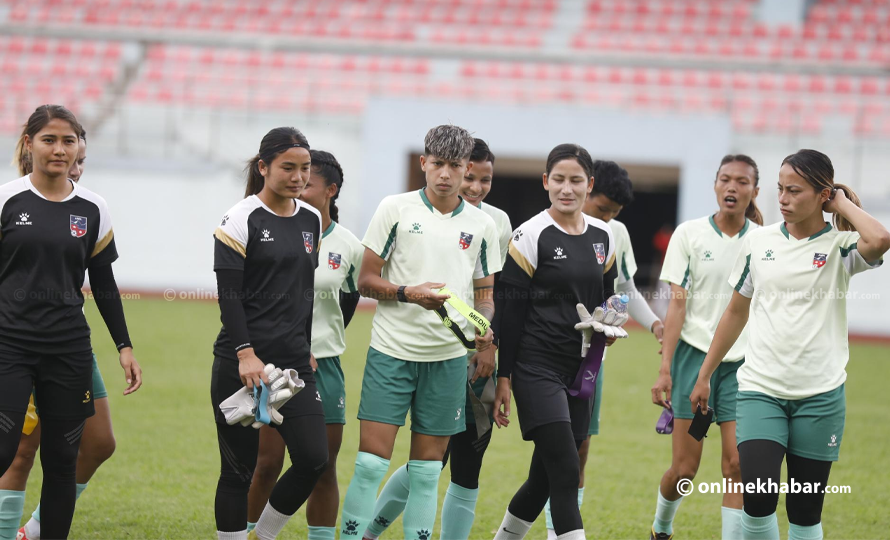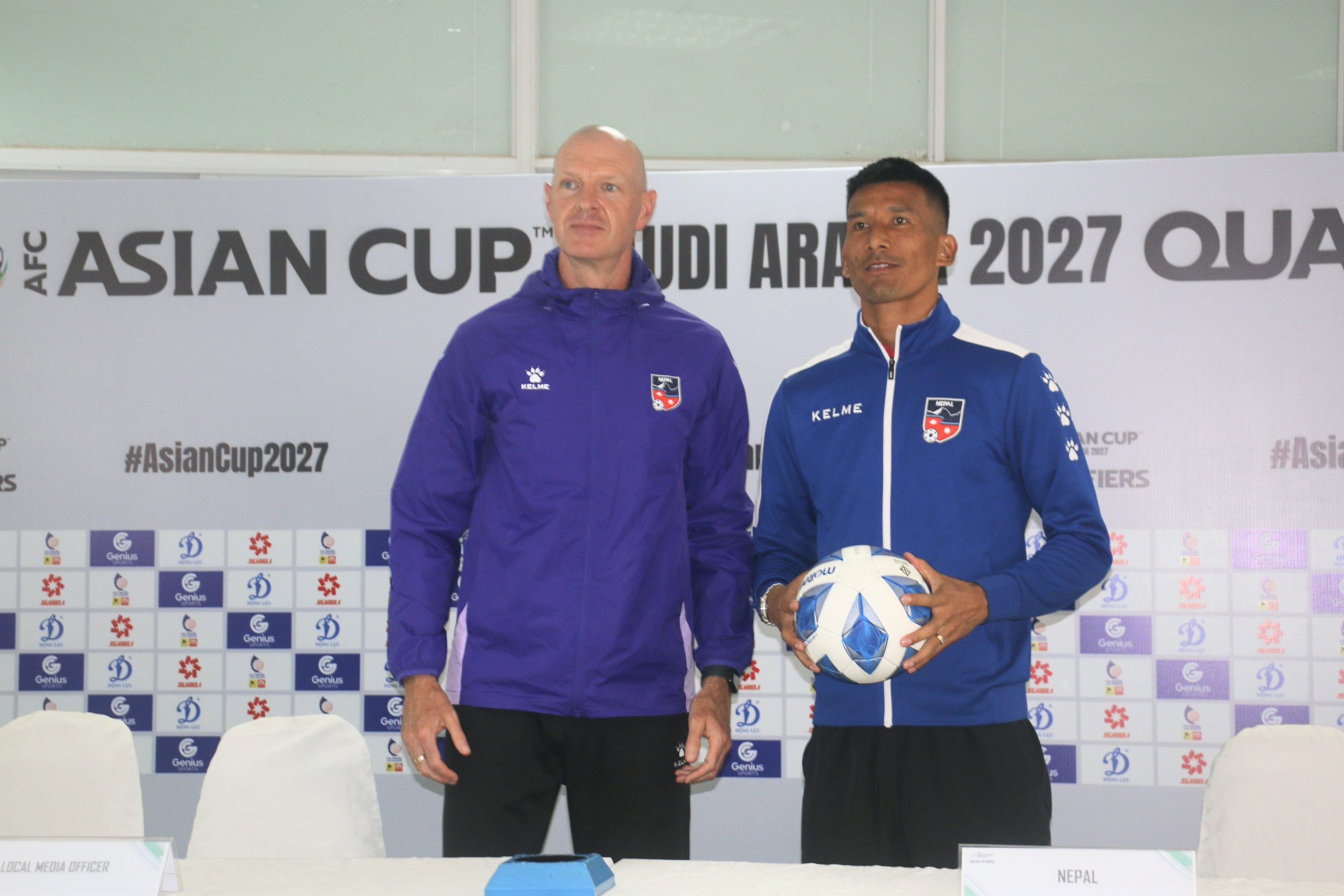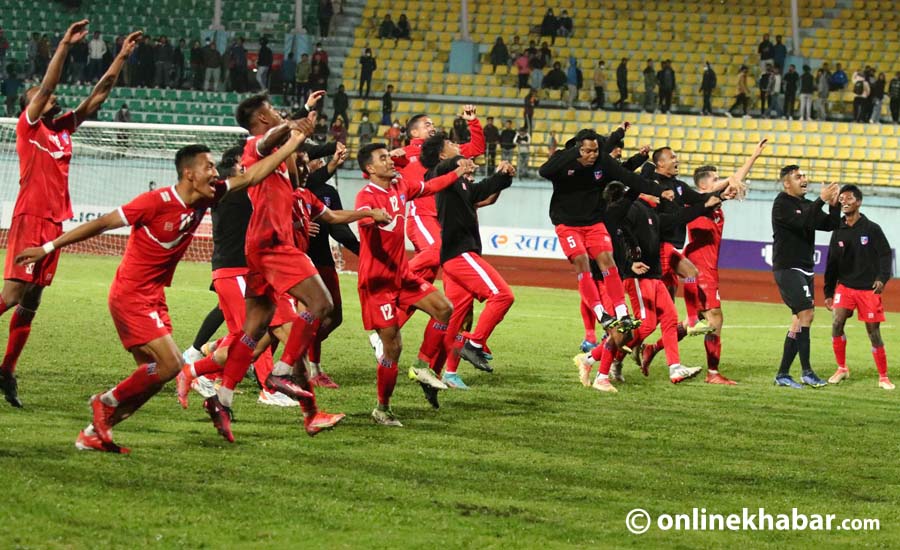
Nepal played its first international football match on October 13, 1972 in Beijing. Despite scoring two goals, Nepal was defeated by China who scored six.
Furthermore, YB Ghale holds the distinction of being recognised as the first Nepali footballer to score an international goal. This happened during the 1982 Asian Games in New Delhi, India, where he netted a goal against Kuwait.
If you want to research the roots of domestic football in Nepal, you have to go back to the Rana Regime. The Tribhuvan Challenge Shield, inaugurated in 1948, stands as one of the oldest football tournaments in the country. Soon the All Nepal Football Association (ANFA), the governing body overseeing football activities in Nepal, was established in 1951.
Currently, Nepali football finds itself at a crucial juncture, facing a do-or-die situation. The challenges and dynamics present in contemporary Nepal are mirrored in the world of football, adding an extra layer of significance to the sport’s current state in the country.
Worry state of football
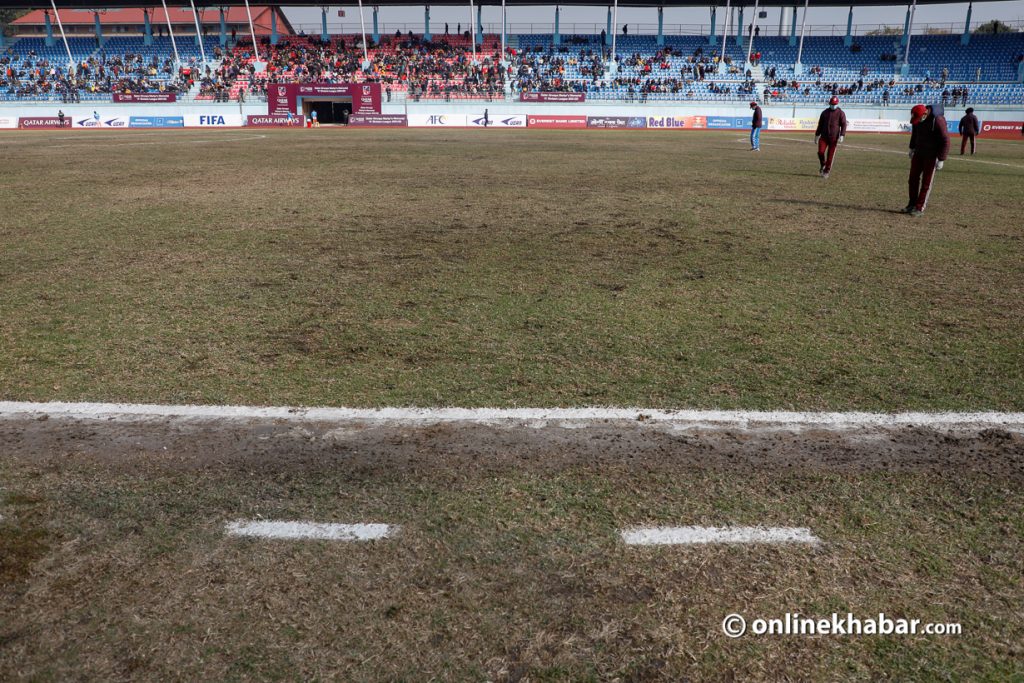
Nepali football continues to grapple with a lack of infrastructure for football matches, whether at the national or international level. The Dasharath Stadium stands as the solitary international venue in the country, catering to both international matches and crucial domestic competitions. Its post-2015 earthquake reconstruction was specifically undertaken to ensure its readiness for hosting events like the South Asian Games.
The existing stadiums and grounds in Nepal are insufficient, and the football grounds in cities like Pokhara and Biratnagar still lack professional management. Additionally, the primary national league for domestic football, the Martyr’s Memorial A-Division League, has been constrained to the Kathmandu Valley. While in earlier editions matches were also held in Pokhara, recent seasons have seen a shift, with matches no longer being played at Pokhara
In the 45th edition of the Martyr’s Memorial A-Division League in 2023, 14 teams participated in the competition. Despite the significant number of participating teams, the quality of the football matches fell short of audience expectations. The matches held during the event failed to attract the desired viewership. Consequently, the ongoing Nepal Super League has strategically scheduled matches in the evening, possibly as an effort to enhance audience engagement and attendance.
Furthermore, fans have expressed disillusionment with the A Division League, citing ANFA’s inability to establish a consistent schedule each year. Both in the A Division League and the Nepal Super League, teams frequently play matches twice or thrice a week, exposing players to a higher risk of injuries. The duration of domestic leagues remains limited, and significant gaps exist between football competitions on the national stage. During these periods of inactivity, players face the added challenge of no earnings, emphasising the financial strain on Nepali footballers during lulls in the football calendar.
Question of sustainability

The salary of a footballer in the Nepali football national team is very low. It is difficult to sustain economically by Nepali players because most national footballers do not get sponsors.
At present, a few players play in foreign leagues and represent in Nepali football national team. Players want to play for Nepal but their economic condition pushes them away from football. The domestic league of Nepal is completed in such a short time interval that these players do not know what to do for more than half of a year when there is no league at all.
Likewise, looking at the history of the domestic league in Nepal, there is no certainty that the league will occur in the scheduled period. Before the onset of the Covid pandemic, A-Division clubs were actively engaged in district-level cup tournaments. However, these tournaments have nearly ground to a halt in the aftermath of the pandemic.
Additionally, businesses have shown reluctance to invest in Nepali football, largely due to the economic crisis brought on by the pandemic. The challenging economic landscape has had a cascading effect, affecting both the grassroots-level tournaments and the willingness of businesses to contribute to the development of Nepali football.
The grassroots level of Nepali football faces significant challenges. There is a noticeable absence of grassroots competitions across the country. In the Kathmandu Valley, the scarcity of grounds further restricts children’s access to play football.
While futsal grounds have been established, their small size and associated costs limit accessibility. These futsal facilities are not easily available to the wider public. Moreover, schools tend to be less enthusiastic about promoting games and sports like football due to a shortage of grounds and concerns about the potential for injuries in such sports. The overall scenario underscores the need for increased infrastructure, affordability, and a more encouraging environment to nurture football at the grassroots level in Nepal.
Ever evolving football

Modern football is evolving day by day. Legendary footballers once prominent in European football leagues are now making their mark in Asia’s Saudi Pro League. Our neighbour, India, has also undergone a significant transformation in football through the Indian Super League (ISL).
Under the leadership of footballer Sunil Chhetri, Indian football has experienced a remarkable change over the past decade. Chhetri’s influence has played a pivotal role in shaping the face of Indian football. The last time Nepal’s national side secured a victory against India was in the 2013 SAFF Championship.
Since then, India has tremendously worked on the quality of its football team, which is visible in the FIFA rankings along with its domestic infrastructure and the opportunities the players get.
However, FIFA rankings are not the only factor that decides the future of the football national team, which probably means there is still hope for the Nepali football team.
With the FIFA World Cup 2026, which is supposed to be held in Canada, Mexico and the United States extending teams number up to 48, FIFA World Cup Qualifiers have been more exciting and thrilling than before.
Now, we can see Asian teams performing good quality football matches because it was not expected the same before with Asian teams. Now, football is expanding from its boundary of Europe or South America domination because, in the decade of 2020, we have seen huge changes in football in North America, Africa and Asia including Australia.
In Nepal’s case, the ANFA currently lacks a comprehensive visionary roadmap to reach the Asian Cup and FIFA World Cup. Getting to these tournaments requires the national team to approach each match with a focus on gaining experience and acquiring the necessary skills. A mindset that prioritises learning over immediate results is crucial for preparing the team to tackle future challenges effectively.
Nepal has consistently produced energetic and skilful players and hired coaches who exhibit comparable levels of energy and proficiency to their counterparts in European or other football teams.
However, for football to yield positive outcomes, it is crucial to have visionary leaders and committees within ANFA and the National Sports Council who possess a deep understanding of the sport. There seems to be a perception that individuals in key positions in ANFA and the National Sports Council may not fully grasp that football is not merely a game; it also serves as a representation of a nation to the rest of the world.
Another thing is that Nepali football is compared with the Nepali national men’s cricket team. Nepali men’s senior team played in the Asia Cup for the first time and it also qualified for the T20 World Cup in 2024.
The first thing one needs to understand is that football and cricket are two different sports. These two sports should not be compared with each other. We are Nepali and we should support both sports and other sports. Sports are also representations of the nation. So, as a Nepali, let’s support football too.
It is time that concerned authorities should recognise that football is not only a sport but also the emotions of millions of Nepali football fans.




